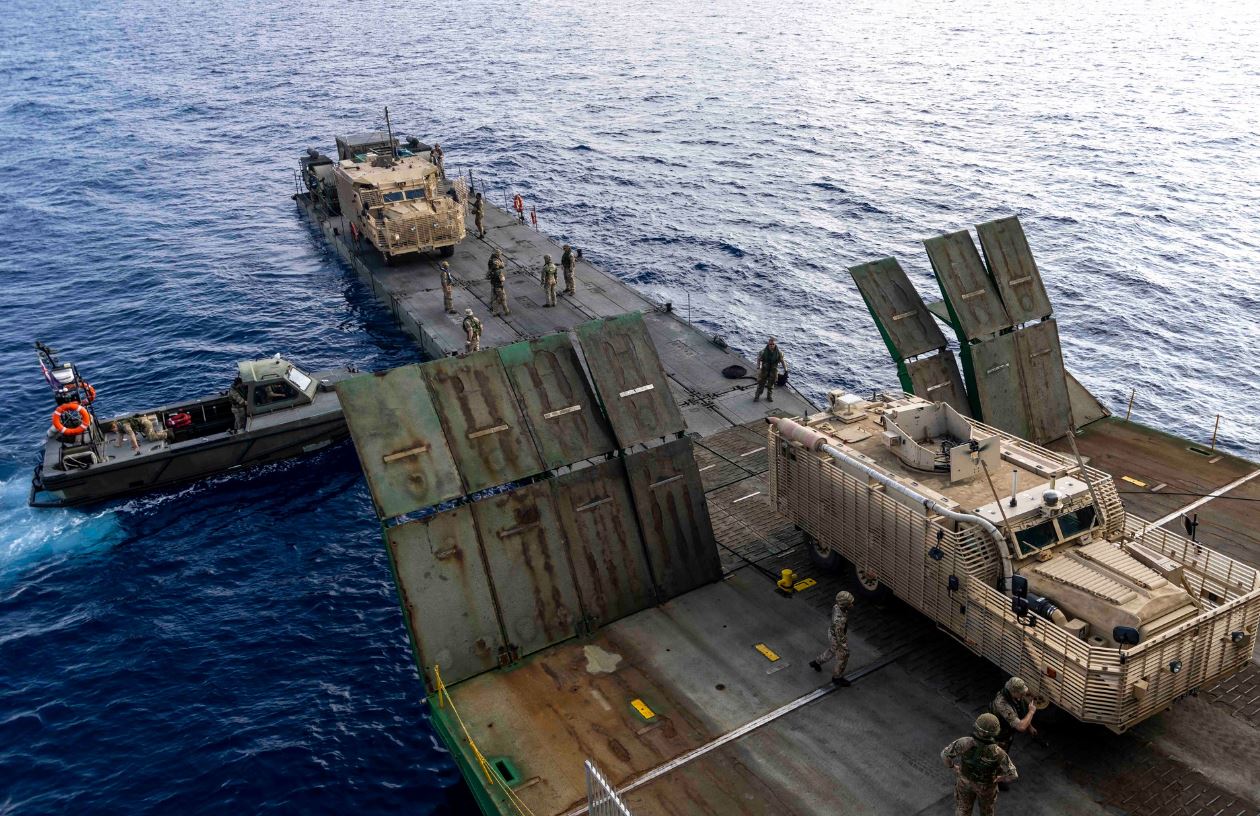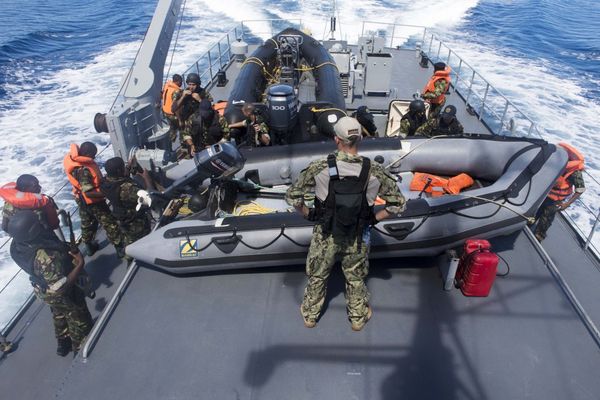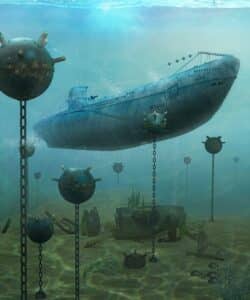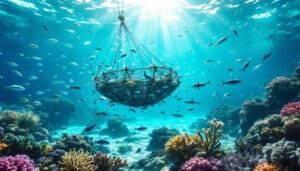In a global context where oceans are essential for trade, food security, and biodiversity, maritime security is of crucial importance. It ensures that activities at sea, encompassing transport, fishing, and exploration, proceed without threatening incidents, whether of human or natural origin. The emergence of piracy, terrorist attacks, and geopolitical tensions around critical maritime routes, such as the Suez Canal, illustrate the current challenges. With increasing globalization, reliance on the oceans is growing, making it imperative to strengthen international regulations.
Table of Contents
ToggleThe Emergence of Maritime Security
Historically, the concept of maritime security has not always been so central. It is only recently that the term has gained popularity, largely due to technological advancements and the globalization of trade. In ancient texts, philosophers like Plato already addressed the issue of protecting maritime cities, but from an angle that today seems archaic.
We must go back to the time of the British Empire to see the emergence of a first version of maritime security in the form of naval power. Alexander Webster, a Scottish writer and politician, already mentioned the importance of the fleet as a security element for Great Britain. However, it is during the 20th century that this notion took a modern turn, driven by global geopolitical and economic evolution.
The International Maritime Organization (IMO), established in 1959, has played a central role in this transition. Its first task was to renew the International Convention for the Safety of Life at Sea, known as the SOLAS Convention. This treaty remains today a pillar of maritime security, affirming the crucial importance of cooperation between nations to maintain this security.
Over the decades, various events have highlighted the vulnerability of maritime systems. Thus, the Ever Given accident in 2021, blocking the Suez Canal, demonstrated that disruptions in maritime routes can have global consequences. Similarly, tensions in the Black Sea due to geopolitical conflicts have underscored the need for rigorous management.
A more recent analysis of academic documents shows a significant increase in publications focused on maritime security. This confirms a growing need to understand and respond to various threats, whether environmental, economic, or security-related. The debates have become more complex, particularly with the enforcement of agreements such as those of Montego Bay, codified in 1982 and ratified in 1994.

The field of maritime security is also influenced by other current issues such as piracy and maritime terrorism. Incidents in the Red Sea or along the Somali coast remind us that challenges are not limited to economic and environmental dimensions alone.
It is essential to create an accurate mapping of the threats to maritime security to anticipate and avert crises. Contributions from geography and geopolitics provide a useful framework to analyze how states, international organizations, and private companies, such as Naval Group or CMA CGM, manage these complex issues.
Economic and political actors must constantly rethink their strategies to navigate a perpetually changing ocean. With phenomena such as climate change, whose impacts are well documented by the French Research Institute for Exploitation of the Sea, the security framework must now pay special attention to environmental risks.
In conclusion, the emergence of maritime security has been shaped by historical, political, and economic forces. Its importance continues to grow as the world increasingly relies on the oceans for trade, migration, and natural resources.
The Keys to Understanding Maritime Security and Safety
The distinction between maritime security and maritime safety may seem subtle, but it is fundamental to understanding the current dynamics of maritime spaces. At the heart of this distinction lies an understanding of the risks and threats associated with these two concepts.
According to the International Maritime Organization (IMO), maritime safety focuses on the prevention of threats and deliberate actions aimed at maritime activities. In contrast, maritime security deals with accidental risks, involving technical and environmental aspects.
For illustration, consider the case of sustainable fishing. Organizations like Bretagne Pêche Durable highlight the importance of safety to avoid navigation-related accidents. As for safety, it focuses on threats such as illegal fishing, endangering both marine resources and local economies.
These distinctions are essential for the development of effective policies and protocols concerning maritime security and safety. Thus, committees like the Maritime Pilots Union and the General Inspection Company strive to ensure that safety standards are respected while monitoring facilities to prevent any potential threats.
One of the major aspects of this distinction lies in intentionality. While maritime security focuses on involuntary incidents, such as oil spills or human errors, maritime safety is responsible for preventing intentionally harmful actions directed against property and people at sea, similar to acts of piracy or terrorism.
On an international level, the framework governing maritime security and safety is becoming more complex over time. Multilateral agreements such as those recorded in the IMO legal directory illustrate the need to synchronize inter-state efforts to ensure comprehensive coverage of potential threats.
For maritime professionals, this distinction is a source of numerous awareness-raising efforts. As companies like CMA CGM operate routes across the globe, the implementation of robust protocols becomes imperative to ensure the safety of fleets and transported goods.
Furthermore, considering both aspects together allows for a thorough reflection on their interdependence. Emerging technological solutions, such as the digitalization of port operations and the integration of artificial intelligence to anticipate potential threats, echo projects presented at recent IMO conferences.
Ultimately, understanding the distinction and interconnections between maritime security and safety is essential for navigating current issues. The inherent complexity in the definition and implementation of these terms underscores a constant need for scalability and adaptability in the face of a constantly evolving maritime environment.
The Actors and International Regulations in Maritime Security
Maritime security is a vast field where many actors collaborate to ensure the safeguarding of global maritime routes. International institutions, national governments, private firms, and non-governmental organizations all contribute to enacting, applying, and monitoring maritime security standards.
The International Maritime Organization (IMO) is undoubtedly the most influential body in this context. Since its inception, it has worked to harmonize navigation rules and improve maritime safety. With the expansion of international trade, its role is strengthening, particularly in light of the need for joint regulation between different nations to address growing risks.
Among these actors are also companies such as Vinci Autoroutes and Naval Group, which, through the implementation of innovative and eco-friendly technologies, contribute to reducing emissions and maritime pollution.
The DGA – Directorate General of Armament and Maritime Affairs are key entities at the national level, responsible for regulating and enforcing sea safety standards. They work closely with private associations to maintain rigid safety standards.
International agreements, such as those of Montego Bay, define exclusive economic zones and establish navigation rules to protect both the interests of coastal nations and various maritime stakeholders. This forms an indispensable framework for maritime safety legislation, but also for many other issues related to the environment.

In addition to institutions, many treaties influence maritime practices. The SOLAS Convention, for example, is a cornerstone of maritime law aimed at protecting vessels from natural and technological hazards.
Today, the implementation of digital techniques and monitoring systems enhances regulation concerning safety and security. This transformation is driven by the collective efforts of economic and political actors, who must face new threats such as cyber-terrorism.
In terms of regulation, several scenarios are being discussed. Among them, the adoption of smart sensors in ports, the use of predictive analysis to detect anomalies in port activities, as well as the use of artificial intelligence to supervise maritime flows in real-time.
Ultimately, international cooperation and technological innovation prove essential for building a sustainable maritime future. The interaction between public and private actors facilitates a rapid adaptation to emerging maritime security challenges, thereby effectively protecting the oceans and the resources they contain.
Maritime Security in the Face of Current Environmental Challenges
Maritime security, previously primarily concerned with navigation and safety issues, must now adapt to growing environmental challenges. Oceans, on the frontlines of climate change, play a crucial role in regulating the Earth’s climate. Thus, extreme weather events such as cyclones and tsunamis exacerbate safety issues at sea.
One of the major axes of contemporary maritime security is the fight against marine pollution. Initiatives such as those of Bureau Veritas are anchored in this perspective, collaborating with governments to establish stricter protocols to reduce oil spills and chemical pollution.
The issue of marine biodiversity is also central. With overfishing and illegal fishing practices, marine biodiversity is under increasing pressure. Discussions on maritime security are increasingly incorporating these dimensions, seeking to reconcile economic development and the conservation of marine ecosystems.
Among the emerging threats, rising sea levels and ocean acidification pose potential dangers to maritime security. They increase the risks of coastal flooding and damage to vital infrastructure, questioning current port security plans.
Diverse organizations such as the French Research Institute for Exploitation of the Sea conduct research to anticipate these changes and develop resilient strategies. These efforts underscore the need to stay ahead of sometimes inexorable threats.
In this regard, the promotion of renewable energies like hydrogen is encouraged. Shipowners are doubling their efforts to invest in clean technologies to reduce the carbon footprint of the maritime sector and build a sustainable maritime future.
It is crucial to note that the management of marine resources must take place within a framework of enhanced security. Advanced monitoring measures ensuring traceability of maritime activities are necessary. The deployment of drones and smart sensors helps prevent potential incidents by quickly identifying regulatory violations.

Beyond state responsibilities and technological innovations, citizen engagement must not be overlooked. Public awareness and engagement are essential to support environmental policies and ensure better protection of the oceans.
In summary, current maritime security cannot be dissociated from environmental issues. An integrated approach to these two aspects is essential for addressing the 21st-century challenges, preserving the security of coastal nations, and maintaining the balance of oceanic ecosystems as a whole.
The Future of Maritime Security: Perspectives and Solutions
The future of maritime security is shaping up through a panorama of challenges and opportunities, where technological innovations and international cooperation redefine the contours of this strategic sector. As we move into 2025, understanding possible developments offers encouraging perspectives for strengthening the security of our oceans.
The digital revolution plays a driving role in the transformation of maritime practices. Technologies such as blockchain, for example, promise flawless traceability of cargoes, minimizing fraud and improving transparency in maritime trade. Such technological advances enable enhanced security against logistical and economic threats.
Online collaboration platforms and shared information systems facilitate better coordination among countries to manage maritime crises. The creation of interconnected databases enables the rapid exchange of information and enhances responsiveness to incidents at sea.
2 missions clés :
— Préfecture maritime et commandement en chef ATLANT (@premar_ceclant) December 4, 2024
1️⃣ Sécurisation des approches maritimes
2️⃣ Sécurisation des accès aux ports stratégiques pour garantir les approvisionnements.
Mais aussi neutralisation des mines historiques, contribuant ainsi à la sécurité maritime et à la lutte contre la pollution 🌊 pic.twitter.com/7RxLQeXCYp
Environmentally, refocusing maritime policies on sustainability is a strategic axis. Investment in alternative energies and circular economy technologies helps reduce the carbon footprint of maritime activities while protecting marine ecosystems from chronic pollution.
International alliances for maritime security are set to strengthen. Projects such as the upcoming Eastern Mediterranean Maritime Conference bringing together experts, researchers, and political decision-makers constitute pioneering initiatives to develop concrete solutions to maritime challenges.
In the face of increasing digitalization, information security becomes a priority. Digital infrastructures must be protected against cyber-attacks. This involves continually developing maritime cybersecurity tools in partnership with tech giants and cybersecurity entities.
To overcome economic challenges, suitable long-term financing is essential for conservation and security programs. New approaches include reallocating resources to support emerging innovations and enhancing intersectoral integration.
In conclusion, a safe maritime future rests on a combination of cutting-edge technologies, international partnerships, and responsible ecological governance. With well-defined global strategies, every actor, from sailor to politician, has a role to play in building safe, navigable, and environmentally respectful oceans.








